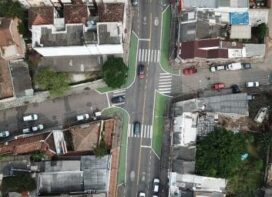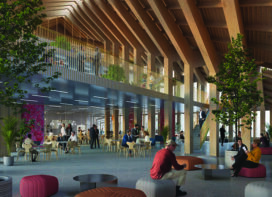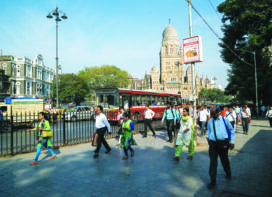World Resources Institute looks at the challenges that metro systems need to address to ensure a complete integration with the city. When compared to new cities where the metro projects integration is factored in, retrofitted projects need to adapt to different travel patterns of the city, with existing rail systems where the city transport system and commuting patterns naturally evolved around the transit corridor. The challenges faced by the metro systems also differ depending on the maturity of the system
 Indian cities are investing in high quality mass rapid transit systems to address their growing mobility requirements. With 11 functional Metro rail networks (Mumbai, Jaipur, Chennai, Kochi, Lucknow, Bengaluru, Hyderabad, Kolkata, Delhi, Gurgaon, Ahmedabad), six metro systems due to launch by 2020 and 12 in the planning stage, Metro systems are expected to play a significant role in shaping urban development in the country.
Indian cities are investing in high quality mass rapid transit systems to address their growing mobility requirements. With 11 functional Metro rail networks (Mumbai, Jaipur, Chennai, Kochi, Lucknow, Bengaluru, Hyderabad, Kolkata, Delhi, Gurgaon, Ahmedabad), six metro systems due to launch by 2020 and 12 in the planning stage, Metro systems are expected to play a significant role in shaping urban development in the country.
Enabling last-mile: The issue of last-mile connectivity is key to the overall reliability, ease-of-use and costeffectiveness of an end-to-end journey for commuters. One of the prime reasons for this is the need for strategy mixes that are reflective of the station type and the ridership levels.
Enabling physical integration through data-based methods: Physical integration of stations will be significant in planning shorter transfer paths, reducing wait times, improved navigability and increasing circulation efficiencies. Such design solutions could also extend to areas outside the metro stations to streamline the movement of pedestrians, entry and exit of parked vehicles, pick-up and drop off of commuters and transfer paths to nearest last-mile options. Metro agencies can enable this by exploring station design with big data applications to be able to deploy multidimensional assessments of stations. This would include solutions that take into consideration multiple parameters, such as, scrutinize how user groups access Metro services with respect to accessibility aspects of spatial, feeder connectivity, temporal, comfort/safety etc.
Increasing network reach with operational integration and systems planning: While the Metro continues to expand its reach through the city, it must also ensure it is able to tap into the commuting requirements of new trip generator points by developing strategies of intermodal services that extend the reach of the metro.
Optimizing ridership levels to match system capacities with greater operational efficiencies: The challenge of increasing the ridership in a metro network to meet the design levels is one faced by most new metro systems in India and requires multiple optimization strategies. Maintaining system advantages such as commuter safety, minimum and predictable travel times, wait times are key aspects that metro systems will need to optimize efficiently, for commuters and for the metro to be the preferred mode of travel. Strategies of crowd management traffic management, curb and platform utilization would need to be investigated by metro agencies to help build better ridership levels, especially as the network grows.
Adapting to the changing socioeconomic dynamics of the city: Metro rail networks and such infrastructure are designed, built and operated over large periods of time. Given the dynamic nature of Indian cities today, in terms of growth and development, there are also shifts in demography, technology, socioeconomic and environmental changes that need to be considered. Coupled with growing needs of on-demand services in the city, for public mass transportation systems to stay relevant and competitive, the systems need to be adaptive to changing trends with multifaceted strategies: a combination of real-time, reliable information, end-to end connectivity options and comfort.
 TrafficInfraTech Magazine Linking People Places & Progress
TrafficInfraTech Magazine Linking People Places & Progress


